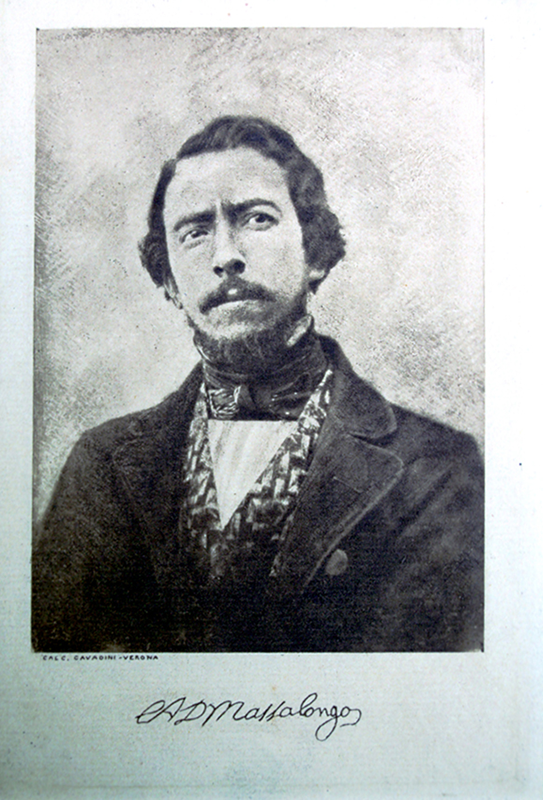of the NHM Giancarlo Ligabue - Venice

of the NHM Giancarlo Ligabue - Venice

of the NHM Giancarlo Ligabue - Venice


Abramo Bartolomeo Massalongo was born on May 13, 1824, in Tregnago (Verona, NE Italy), to a modest family. He enrolled in the faculty of medicine at the University of Padua, at that time the course most related to the natural sciences, Massalongo’s main field of interest. However, both his ill health and his father's will led him to graduate in law. Later, he moved to Padua to devote himself to botany, with the support of Roberto De Visiani, then prefect of the Botanical Garden of Padua.
Because of his health issues, he returned to Verona (1851) where he taught natural history in a local gymnasium. He also joined the Ibis group, a circle of intellectuals of which he was one of the most dynamic contributors. Other relevant members of the group were Roberto De Visiani, Carlo Tonini, Antonio Manganotti, Filippo Parlatore, Elisa Parolini, and Aleardo Aleardi.
Massalongo had a wide array of scientific interests. As a paleontologist, he deepened his knowledge of the fossils of Bolca and of other localities in North-East Italy as well as the Miocene flora of Senigallia (near Ancona, C Italy). In botany, he became one of the most recognized lichenologists in Europe. The use of the microscope with achromatic lenses developed by Giovanni Battista Amici allowed him to define a new system of classification of lichens based mostly, even if not only, on the microscopic characters of the spores.
He was thus an innovator as well as an extremely prolific researcher: between 1850 and 1860 he produced about 30 publications in lichenology. Ricerche sulla autonomia dei licheni crostosi, published in 1852, is one of his most famous works and still today a reference for researchers. It contains the descriptions of 71 genera of lichens, 22 of them new to science, accompanied by detailed watercolor plates.
Image property: Museum of Natural History of Verona. All rights reserved.
His intense research activity aggravated his health to the point that, affected by tuberculosis, he died at the age of 36 on May 25, 1860. His passing was considered a great loss to the scientific community, and the city of Verona paid him solemn honors, recognizing his fundamental contribution to science.
Along with numerous publications, several natural history collections remain as a memento of his intense scientific activity. Numerous copies of Lichenes Italici Exsiccati are preserved in various museums and universities around the world. Findings, notes, publications, and various materials are preserved at the Museum of Natural History of Verona. Several collections of specimens are also preserved at the Museum of Natural History of Venice. These include the so far unpublished collection of lichens presented in this web portal.
Abramo Massalongo is today remembered as a pioneer, whose work paved the ground for modern lichenology. Many taxa he described are still valid today, and several taxa were named after him by lichenologists worldwide. At the same time, his publications continue to be studied by contemporary botanists and naturalists.
